Packs
These are collections of profiles either from certain updates or containing related themes
40 Profile Update — 2018 End of Year Update
Channel Update Video — December 2018
Version: iCUE 3.10
Profiles: ‘Battlefield’, ‘Brimstone’, ‘CallOfDuty Black Ops 4’, ‘Christmas 2018’, ‘Cobalt’, ‘Corrosive’, ‘Crimson’, ‘CSGO Fade’, ‘Dark Souls 3’,
‘DOOM’, ‘Fallout Vault’, ‘Far Cry 5 Menu’, ‘Firestorm’, ‘Fortnite’, ‘Full Force’, ‘Helix’, ‘Ice’, ‘Knight Rider Medium’, ‘Laser Raptor’, ‘Neon’,
‘Nuclear’, ‘Overwatch Loading’, ‘PacMan’, ‘Poison’, ‘PUBG Chicken Dinner’, ‘Rainbow Fire’, ‘Rainbow Six Siege’, ‘Sonar’, ‘Starcraft II’,
‘Star Wars Duel’, ‘Super Hot Polygons’, ‘Super Saiyan’, ‘The Division Scan’, ‘Thunderstorm 2’, ‘Titanium’, ‘Underwater’, ‘Unreal Tournament’,
‘Warcraft Azeroth’, ‘Witcher 3 Fade’, ‘XCOM2 Vertical’
‘Helix’ is a previously unreleased profile, unavailable anywhere else at the current time.
Instalación
La instalación, no os voy a engañar, es complicada. Pero solo es complicada por el hecho de que tenemos muchísimo cableado, pues recordemos que cada uno de los tres ventiladores tiene dos cables, y luego tenemos que instalar su controladora, el Commander Pro, el Lighting Node Pro y las cuatro tiras LED, cada cosa con sus cables y sus conectores SATA. Un poco caótico que requiere mucho tiempo y dedicación eso sí, pero que en realidad no tiene complicación más allá que esconder los cables.
Vamos a comenzar enumerando el hardware utilizado, al menos lo que nos afecta, aunque en realidad ya lo conocéis:
- Intel Core i5-6600K @ 4,2 GHz.
- Asus Z170 Deluxe.
- 4x4GB Corsair Vengeance RGB DDR4 3000 Mhz.
- Corsair RM1000i.
- Corsair Neutron XTi 480 GB SATA3.
- Corsair Obsidian 750D.
- Corsair Hydro H115i.
Comenzamos con la instalación retirando los ventiladores que vienen de serie en el H115i que analizamos el otro día para aprovechar la facultad de que los HD 140 RGB que analizamos están diseñados para radiadores, e instalando éstos en su lugar.
De igual manera, el ventilador que vino suelto lo instalamos en la parte trasera de la caja.
Ya tenemos los tres ventiladores instalados, dos en el radiador (que está en el techo) y uno en la parte trasera de la 750D.
Los conectores RGB de los ventiladores los conectamos a la controladora que viene con éstos, y ésta la montamos por detrás de la placa base.
Los conectores PWM de los ventiladores, por su parte, los vamos a conectar al Commander Pro para poder controlarlos con el software. Así pues, le vamos haciendo hueco en el suelo de la caja y los conectamos.
Ya lo tenemos montado todo, y solo queda instalar el Lighting Node Pro y las tiras LED, que colocamos alrededor de la caja. En seguida os mostramos qué tal queda pero os vamos dando un pequeño adelanto.
Create a Lighting Node PRO for a Raspberry Pi Pico with TinyUSB
This guide will teach you how to create a Lighting Node PRO with a Raspberry Pi Pico.
Note: FastLED currently does not support the RP2040 natively. You must manually merge support by modifying your library to include the in the FastLED/src/platforms/arm/rp2040 folder and / statements in and .
-
Install the .
-
Open the example «TinyUSB», you can find it in Arduino IDE in the File menu->Examples->Corsair Lighting Protocol->TinyUSB.
If you can’t open the LightingNodePRO example the Corsair Lighting Protocol library is not installed correctly. -
Select the Raspberry Pi Pico as shown in the screenshot below. Be sure to select the «Adafruit TinyUSB» USB Stack.
-
Upload the «TinyUSB» sketch to your Pico.
-
Do the wiring.
For more information on how to wire the LEDs and see the links. -
Verify your device works as expected.
Open the Windows settings->devices->Other devices.
Somewhere in the list of devices, there should be a device called «Lighting Node PRO».
Conclusion
The Corsair lighting node pro review RGB is a controller that allows the users to either connect up to 6 HD/SP RGB Fans or a combination of the provided individually addressable RGB LED Strips and the RGB fans to control the lighting using the Corsair Link software, definitely a handy and much-desired feature. Software control allows true customization than the hardware-based controllers like ones provided with the HD/SP RGB fans in their packing box.
Particularly the controller supplied with the HD RGB fans lacks the functionality of the individual control of the addressable RGB LEDs on the HD RGB Fans. The Corsair has responded to the users’ feedback in the form of the Lighting Node Pro and Command Pro.
The controller itself is small size device in black color measuring 55mmX31mmX12mm. It has two channels labeled as 1 and 2. They are cross-referenced in the Link software using the LED Channel # 1 and LED Channel # 2 respectively.
The unit draws 4.5V to 5.5V input power and is using the SATA power cable. It has a mini USB port on the rear side. One end of the supplied mini USB 2.0 cable is connected to this min USB port and the other end is connected to the USB 2.0 header of the motherboard. Each LED channel is a 3-pin header. The headers are implemented on the right side, not in the middle. There is a Corsair logo embossed above the LED text.
It does not light up in case you are wondering about that. There is a small pinhole above the Corsair logo. It is not needless at all rather has an important function which unfortunately was not mentioned in their user guide. There is a reset button inside this hole. The Corsair has provided two double-sided mounting tapes so that user can easily install the device inside the chassis in a proper and secure manner.
The Corsair has provided all the required cables in the bundle. There is one mini USB cable of length 375mm. It is following the USB 2.0 protocol and it can be connected to the spare USB 2.0 header of the motherboard. There are two 485mm cables that are used to connect the RGB LED Hub of the HD/SP RGB fans to the Lighting Node Pro.
Lastly, there are 4 RGB LED Extension Cables each of 345mm length. The Corsair has provided 4 addressable RGB LED strips with the Corsair lighting node pro review. Each strip has 10 addressable RGB LEDs on it. Both ends of the given strip are designed such as they can be daisy-chained to each other.
The RGB LED Extension Cables are also featuring the same design on both ends. Corsair was really considerate in giving the users multiple mounting options with these strips. Each strip has 4 powerful magnets in addition to the 3M adhesive backside as well.
The Corsair Link Software is used to control and customize the lighting effects to create stunning, vivid visuals inside the chassis and they have done it with almost perfection. The user can customize the color effect on each connected device on each of the channels or let them sync altogether.
This all comes down to the users on how to produce the looks that they want as Corsair has provided enough features in the Link software to do all that. All of this functionality is just a few mouse clicks away. Corsair is providing 2 years of warranty on the Corsair lighting node pro review. I did not experience any glitches while installing the device or using the software.
It is a premium price for the premium product. Period. If there is one thing that I would like to state against the device, it is that one would have to deal with lot many cables and this could be an issue with chassis that lacks proper cable management provision on their backside.

Requirements
The library is compatible with all boards using the MCU ATmega32U4.
This includes Arduino Leonardo, SparkFun Pro Micro, Arduino Micro, and Adafruit 32u4 AVR Boards.
It also supports the Arduino Uno and Arduino Mega, but this requires the HoodLoader2 bootloader, see this wiki for more details.
In addition, any board compatible with Adafruit TinyUSB for Arduino is also supported without the use of custom board definitions. Be sure to define USE_TINYUSB, which is done automatically when using a supported core and selecting TinyUSB for the USB Stack. See the TinyUSB example for implementation details.
It is not compatible with ATmega328 (Arduino Nano), STM8S103F3, teensy, or ESP8266 see list of architecture/platform for a detailed description why they are not supported.
In the rest of the documentation «Arduino» is used as a synonym for all supported boards regardless of the manufacturer.
When you have problems with a board not listed here, please open an Issue.
El software
Ahora mismo, tal y como tenemos conectado el hardware del equipo, esto es todo lo que podemos monitorizar y controlar con Corsair Link: casi todo. Recordad que tanto la fuente de alimentación RM1000i como el disipador H115i están también conectados al Commander Pro. Clic en la imagen para verla en grande.
Ahora mismo el Commander Pro nos permite configurar la velocidad de los ventiladores, aunque también podemos tocar claro los parámetros habituales de fuente de alimentación, disipador y memorias como cuando lo teníamos conectado individualmente a la placa base. No obstante, la parte de iluminación (LED Channel) de éste no tiene nada puesto que la parte de la iluminación depende del Lighting Node Pro.
En la siguiente imagen podéis ver que con el Lighting Node Pro podemos controlar la iluminación tanto de los tres ventiladores HD 140 RGB conectados al canal 1 como de las cuatro tiras LED conectadas al canal 2.
Aquí podemos seleccionar el color que queramos y multitud de efectos preconfigurados.
Uno de los que más me ha gustado, ya que no soy demasiado fan de los cambios de color en la iluminación y, sin embargo, me encanta la iluminación blanca en mi equipo, es el modo temperatura. Aquí podremos configurar hasta qué temperatura tiene un color, pudiendo seleccionar hasta tres, y pudiendo también decirle al software de qué sensor que queramos que dependa. En la imagen, si el Core 2 del procesador está por debajo de 45ºC la iluminación será blanca, poniéndose amarilla cuando esté entre 46 y 64 grados y, finalmente, poniéndose en color rojo si en algún momento sobrepasa los 65ºC.
Por cierto que, como podéis ver a continuación, también podemos controlar la intensidad de la iluminación en cuatro saltos, tanto individualmente en cada una de las tiras o ventiladores como pudiendo configurar uno y copiando su configuración a todos los demás (que es lo ideal).
Ya hemos visto cómo funciona y cómo configurarlo. Y ahora, ¿qué tal queda? Como siempre decimos, si una imagen vale más que mil palabras, un vídeo vale más que mil imágenes, así que a continuación podéis verlo.
Comenzamos simplemente con los ventiladores y sus efectos.
Y, por supuesto, a continuación podéis ver el sistema completo a través de la ventana, con las tiras LED del Lighting Node Pro instaladas una en cada pared.
Si bien es cierto que los medios de que disponemos, al igual que la localización, no son óptimos para poder ver los efectos y colores en todo su esplendor, sí que os podemos decir que en persona se ven de maravilla, y especialmente esa iluminación completamente en color blanco que tanto me gusta a mi.
Corsair Commander Pro
Vamos con el Commander Pro. Éstas son sus características técnicas tal cual están publicadas en la web del fabricante.
El dispositivo viene en una caja alargada en cuyo frontal podemos ver una caja de la marca con ventiladores LED, dándonos a entender que podremos controlar tanto la velocidad de funcionamiento como la iluminación de éstos. Al pie, el propio dispositivo.
En la parte trasera, nos indica las facultades del aparato, que son básicamente servir de centro de control tanto para ventiladores como para sistemas de iluminación RGB, sensores propios de temperatura con sondas térmicas y, lo que a mí me parece bastante más interesante si cabe, como centro de control para dispositivos Corsair Link. Y digo esto porque sin un Commander Pro, en cuanto tengas dos dispositivos con Link te quedas sin cabezales USB 2.0 en la placa base, y es un gran inconveniente.
En los laterales, únicamente el nombre del aparato sobre fondo amarillo.
En el interior nos topamos con el Commander Pro protegido por una funda de plástico transparente, si bien es cierto que debajo encontramos toda la documentación y cableado adicional.
Como siempre, tenemos la pertinente información sobre la garantía y manual de instrucciones entre los accesorios.
Y en cuanto al cableado, encontramos conectores PWM para ventiladores, las sondas térmicas de rigor, un alargador para conector RGB, y un par de pads adhesivos de doble cara para pegar el Commander Pro a cualquier parte de nuestra caja.
Aquí tenéis el dispositivo, del que salen más cables. En éste caso, otro conector SATA de alimentación y un cabezal USB que deberemos conectar (por fuerza) a la placa base.
Vamos a verlo por partes. En uno de los lados tenemos los conectores para cuatro sondas de temperatura y dos más marcados simplemente como “USB” que servirán para conectar dispositivos compatibles con Link. Ciertamente echo de menos un par más, porque luego se echan en falta.
En el lado opuesto lo que tenemos son seis conectores de 4 pines para ventiladores y dos conectores LED RGB.
Finalmente, el cableado: conector SATA y USB.
CONCLUSIÓN
Comenzaré hablando de los ventiladores. Con los Corsair HD 140 RGB el fabricante ha logrado crear un equilibrio prácticamente perfecto entre rendimiento, silencio y estética, pues no solo son bonitos a la vista con sus colores y efectos sino que además nos proporcionan un excelente rendimiento de refrigeración manteniendo un buen nivel de sonororidad. La contrapartida es que, siendo sinceros, es una molestia que tengan un cable RGB dedicado si queremos tener iluminación.
Por otro lado, el Lighting Node Pro. Desde luego es una opción útil y versátil para todos aquellos que quieran añadir iluminación adicional con tiras LED a su equipo, de fácil instalación gracias a los soportes magnéticos pero que también podremos dejar fijos gracias a los adhesivos. Además, y como es habitual en éste fabricante, el nivel de personalización a través del software no tiene parangón alguno.
Finalmente, el Commander Pro. Es un nodo para centralizar todos nuestros dispositivos compatibles con Link y así poder manejarlos y monitorizarlos a través del software. Se agradece la inclusión de control de ventiladores, de iluminación, de temperatura y esos USB adicionales que se echan en falta si tienes muchos productos compatibles con Link como es nuestro caso, pero aun así personalmente me sobran las sondas de temperatura, innecesarias porque hoy en día casi todos los componentes las llevan integradas, y me faltan más conectores internos USB para poder conectar más dispositivos Link.
HD 140 RGB
PROS:
- Excelente estética, con iluminación y efectos.
- Bastante silenciosos, con soportes anti vibración incluidos.
- Excelente rendimiento.
- Incluye controladora RGB en el kit de dos.
CONTRAS:
- Dos cables por ventilador, mas el SATA del controlador.
- Son caros.
Lighting Node Pro
PROS:
- Excelente calidad de iluminación.
- Las tiras son magnéticas, aunque llevan adhesivo por si queremos usarlo.
- El controlador ocupa muy poco espacio.
- Enorme capacidad de personalización con el software.
CONTRAS:
Cables, cables y más cables.
Commander Pro
PROS:
- Centraliza todos (o casi) los dispositivos compatibles con Link que tengamos.
- Controlador para hasta 5 ventiladores.
- Permite conectar dos dispositivos Link directamente al Commander Pro.
- Control de dos canales de iluminación RGB.
- Fácil instalación.
CONTRAS:
Para mi, sobran las sondas de temperatura y faltan más conectores USB para Link.
Como conclusión global, si lo que buscas es un rendimiento de refrigeración excelente y unos efectos de iluminación que no van a dejar a nadie indiferente en las LAN Party, y no te importa tener que buscarte la vida para arreglar el cableado por detrás, desde luego que tanto los ventiladores HD 140 RGB como el Commander Pro y el Lighting Node Pro son unos accesorios que debes plantearte adquirir.
Precios oficiales:
- HD 140 RGB: 29,99 euros.
- HD 140 RGB (kit de 2 con controlador): 27,99 euros.
- Commander Pro: 74,99 euros.
- Lighting Node Pro: 59,99 euros.
Контроллер / концентратор Cooler Master RGB
- Простое в использовании программное обеспечение
- Многоцелевое использование
- Легко монтируется
- Общий интуитивный опыт
Пульт дистанционного управления: Нет | Поддержка программного обеспечения: Да
CoolerMaster — это бренд, известный своей высококачественной продукцией. У них есть огромная линейка периферийных устройств для игровых ПК. Они представили отличный контроллер RGB, который оснащен множеством функций. Это один из лучших на рынке. CoolerMaster упрощает эту задачу с помощью этого контроллера, поскольку программное обеспечение интуитивно понятно. Они предоставили этот высококачественный опыт по приемлемой цене. Вот почему это первое место в нашем списке.
Это чрезвычайно простой и простой в использовании контроллер RGB. Он без проблем работает с вентиляторами RGB, светодиодными полосами RGB и т. Д. Этот низкопрофильный и компактный контроллер RGB поставляется со встроенными магнитами и легко помещается в корпусе вашего ПК. Контроллер предлагает четыре порта RGB, которые поддерживают вентиляторы RGB 12 В или светодиоды RGB с 4-контактным разъемом RGB. Тем не менее, вы сможете подключить еще два дополнительных вентилятора / светодиодных ленты RGB к единственному порту для увеличения освещения с помощью кабеля-разветвителя.
Для питания контроллер RGB использует один разъем питания SATA, поэтому здесь используется интерфейс связи USB (9-контактный разъем) для работы с программным обеспечением RGB. Разнообразные световые эффекты RGB и индивидуальная настройка выполняются с помощью программного обеспечения Cooler Master RGB. Следует отметить, что этот контроллер RGB несовместим с альтернативным программным обеспечением RGB, но с собственным. Контроллер RGB работает с любыми вентиляторами RGB и светодиодными лентами RGB, имеющими 4-контактный разъем (+ 12V-GRB). В комплект поставки входит контроллер RGB вместе со всеми указанными переходными кабелями и разъемами.
Итак, если на вашей материнской плате отсутствует поддержка RGB, но вы хотели бы использовать вентиляторы RGB и светодиодные ленты RGB в корпусе компьютера, то этот разъем RGB будет действительно хорошо служить вашей цели. Это не только довольно недорого, но и очень эффективно в том, что делает.
- Чрезвычайно надежный
- Простое в использовании программное обеспечение CAM
- Может использоваться для управления широким спектром аксессуаров
- Четыре отдельных канала
Пульт дистанционного управления: Нет | Поддержка программного обеспечения: Да
NZXT всегда был в игре с освещением. Их корпуса с акцентным освещением стали появляться даже тогда, когда они не были так популярны. Эта компания теперь производит первоклассные контроллеры освещения RGB и светодиодные ленты, а также многие другие продукты. Это полный пакет, который учитывает потребности потребителей и проверяет все основные функции.
Это адресный контроллер RGB с 4 портами, способными поддерживать 6 аксессуаров или 40 светодиодов (10 светодиодов на канал). Для установления связи используется разъем USB 2.0 (9 контактов) и разъем Molex. Он совместим с вентиляторами Hue + LED strips RGB. Этот контроллер входит в состав осветительного комплекта Hue2, который включает 4 светодиодные ленты с 10 индивидуально адресуемыми светодиодами. Затем этот комплект может использовать 4 порта для создания бесконечных дизайнов. Для смены полос и управления ими используется простое в использовании программное обеспечение NZXT CAM. Они идут еще дальше, предоставляя пользователям простой процесс установки. Контроллер можно установить с помощью магнитов и винтов. Этот комплект позволяет вам создавать потрясающие впечатления от ПК, делая шаг вперед и давая вам больше, чем вы могли бы попросить.
Он поставляется с 4 светодиодными полосами с индивидуально адресуемыми светодиодами. В сочетании с 18 светодиодами акцента Cable Comb и 30 светодиодами HUE 2 UnderGlow, HUE 2 создает впечатляющее отображение осветительных приборов RGB. Все они без труда управляются через CAM, и это очень удобно, чтобы уберечь вас от отвлекающих факторов во время игры. С комплектом NZXT Hue 2 не так уж много проблем. Он не только предоставляет вам множество опций, но также поставляется с полным комплектом для полноценного использования. Однако это тоже делает вещи дорогими, и многие задаются вопросом, стоит ли покупать такой дорогой продукт только для освещения в первую очередь.
Repeat or scale LED channels
You can repeat or scale LED channel controlled by iCUE onto physical LED strips.
This is very useful if you have very long LED strips that are longer than 60/96/135 LEDs, which is the maximum number iCUE supports.
To repeat or scale a LED channel you must apply the or the function in the update hook of the FastLEDController.
See the RepeatAndScale example for the complete code.
Both functions take the FastLEDController pointer and the channel index as arguments.
Additionally, the function takes as an argument how often the LED channel should be repeated.
For example, if you want to duplicate the channel you must pass as argument.
The function takes as third argument the length of the physical LED strip to which it scales the channel using integer scaling.
For example you have 144 physical LEDs on you strip and 60 on the LED channel.
Then the third argument of the function is .
For both functions it’s important, that the CRGB arrays have at least the length of the physical LED strip.
This means if your LED channel from iCUE has 50 LEDs and you use the function to control 100 physical LEDs you MUST declare the CRGB array at least with a length of 100.
Latest Profiles
I just released a AMA Response Video where I responded to some of the communities questions check it out!!
Carina Nebula
iCUE Workshop — Profile Was Created Live
Version: iCUE 4.23.137 or Higher
Profiles ‘Carina Nebula’
Also Includes: 1 iCUE Icons, 1 iCUE Elite Capellix Background and 1 iCUE Nexus Background
Halo Infinite
Halo Infinite Profile Video
Version: iCUE 4.23.137 or Higher
Profiles: ‘Halo: Master Chief’ and ‘Halo: Infinite’
Also Includes: 2 iCUE Icons, 1 iCUE Elite Capellix Background and 1 iCUE Nexus Background
Christmas Profiles
Christmas Short Update Video
Christmas 2018 Profile Video
Christmas ‘Classic’ Profile Video
Version: iCUE 4.17.244 or higher
Profile: ‘Christmas 2018’
Version: iCUE 3.35.152 or higher
Profile: ‘Christmas: Fades’ and ‘Christmas: Stripes’
Also Includes: 5 iCUE Icons, 4 Nexus Screen Backgrounds
Halloween
Old Halloween Profile Video
Halloween Extras Download
Version: iCUE 4.16
Profiles: ‘The Dark’, ‘Pumpkin’ and ‘Eyes’
Halloween Extras: 3 Nexus Gifs, 3 Elite LCD Gifs
Cyberpunk
Cyberpunk Profile Video
Version: iCUE 4.23.137 or Higher
Profiles: ‘Cyberpunk’, ‘Cyberware’ and ‘Netrunner’
Also Includes: 17 iCUE Icons and 12 Nexus Screens
Ghostrunner
Ghostrunner Livestream Part 1
Ghostrunner Livestream Part 2
Version: iCUE 3.33.246
Profiles: ‘CyberVoid’, ‘CyberVoidRed’, ‘CyberVoidGreen’, ‘Dharma’, ‘IndustryGreen’, ‘IndustryMain’, ‘IndustryOrange’, ‘IndustryRed’, ‘Menu’
Also Includes: 3 iCUE Icons
This is a small selection of profiles from the Ghostrunner Corsair iCUE Game Integration.You do not need to download these profiles to use the iCUE Game Integration, if you’re on the latest version they will work without having them imported.
Hyper Scape
Hyper Scape Video
Version: iCUE 3.28.70
Profiles: ‘Hyper Scape’, ‘Hyper Scape Sunrise’, ‘Hyper Scape Morning’, ‘Hyper Scape Day’, ‘Hyper Scape Sunset’, ‘Hyper Scape Night’, ‘Hyper Scape Lobby’, ‘Hyper Scape Loading’, ‘Hyper Scape Map’
Also Includes: 4 iCUE Icons, 2 Nexus Screen Backgrounds
This is a small selection of profiles from the Hyper Scape Corsair iCUE Game Integration.You do not need to download these profiles to use the iCUE Game Integration, if you’re on the latest version they will work without having them imported.
Valorant
Valorant Video
Version: iCUE 3.31.81
Profile: ‘Valorant’
Also Includes: 2 iCUE Icons, 1 iCUE Background, 1 Nexus Screen Background
Create a Lighting Node PRO with AVR
This guide will teach you how to create a Lighting Node PRO with an Arduino Leonardo compatible board.
If you have an Arduino Uno or Mega, see the other guide.
-
Open the example «LightingNodePRO», you can find it in Arduino IDE in the File menu->Examples->Corsair Lighting Protocol->LightingNodePRO.
If you can’t open the LightingNodePRO example the Corsair Lighting Protocol library is not installed correctly. -
Install the CLP Boards.
They can be installed by following the .
After installation it should be possible to select the CLP Boards in the Arduino IDE as shown in the screenshot below.
If your are using a Sparkfun Pro Micro also install the . -
Upload the «LightingNodePRO» sketch to your Arduino.
-
Do the wiring.
For more information on how to wire the LEDs and see the links. -
Verify your device works as expected.
Open the Windows settings->devices->Other devices.
Somewhere in the list of devices, there should be a device called «Lighting Node PRO».
Corsair ML120 Pro LED
Технические характеристики
- Модель: ML120 Pro LED:
- Размеры: 120× 120× 25 мм;
- Скорость вентилятора: 400 — 2400 об/мин;
- Поток воздуха: 20 — 127 м3/ч;
- Воздушное давление: 0.2 — 4.2 мм H2O;
- Уровень шума: 16 — 37 дБ(А);
- Тип подшипника:магнитный подшипник;
- Разъем: 4-pin;
- Время работы: 200000 ч;
- Энергопотребление: 3.48Вт;
- Сила тока: 0.29Ампер;
- Номинальное напряжение постоянного тока: 12 В;
- Гарантия: 5 лет;
- Цена:1800 — 2200 руб.
Упаковка и комплектация
Модель Corsair ML120 Pro LED поставляется в небольшой упаковке из плотного картона с темной полиграфией и ярко-желтой окантовкой. На лицевой стороне находится изображение вентилятора с демонстрацией активной подсветки, наименование новинки, а также перечень особенностей: подшипник на основе технологии магнитной левитации, дизайн корпуса и ротора, широкий диапазон регулировки скорости вращения.
Обратная сторона дополняет вышеприведенный перечень еще одной особенностью – светодиодной подсветкой. Для удобства подачи информации все технические характеристики вентилятора сведены в единую таблицу.
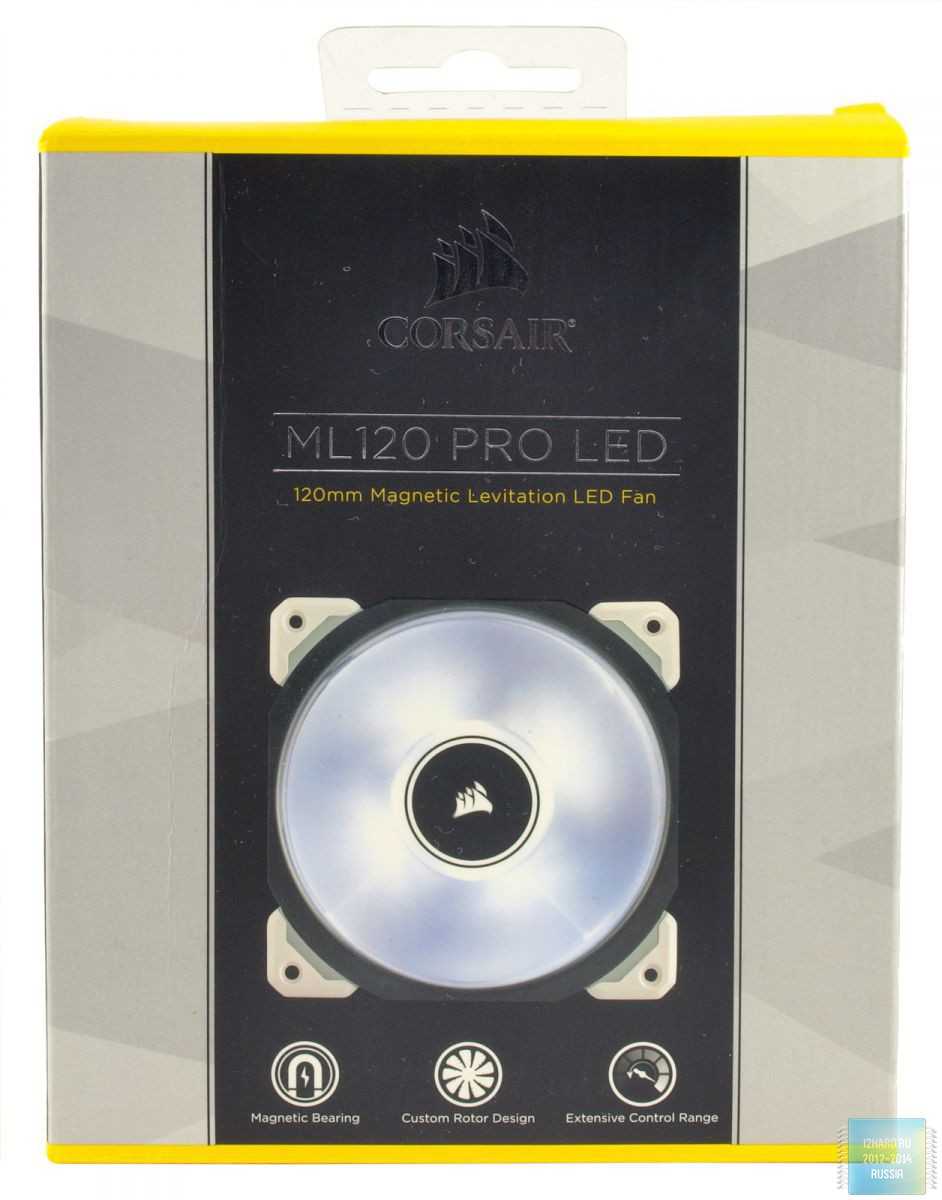
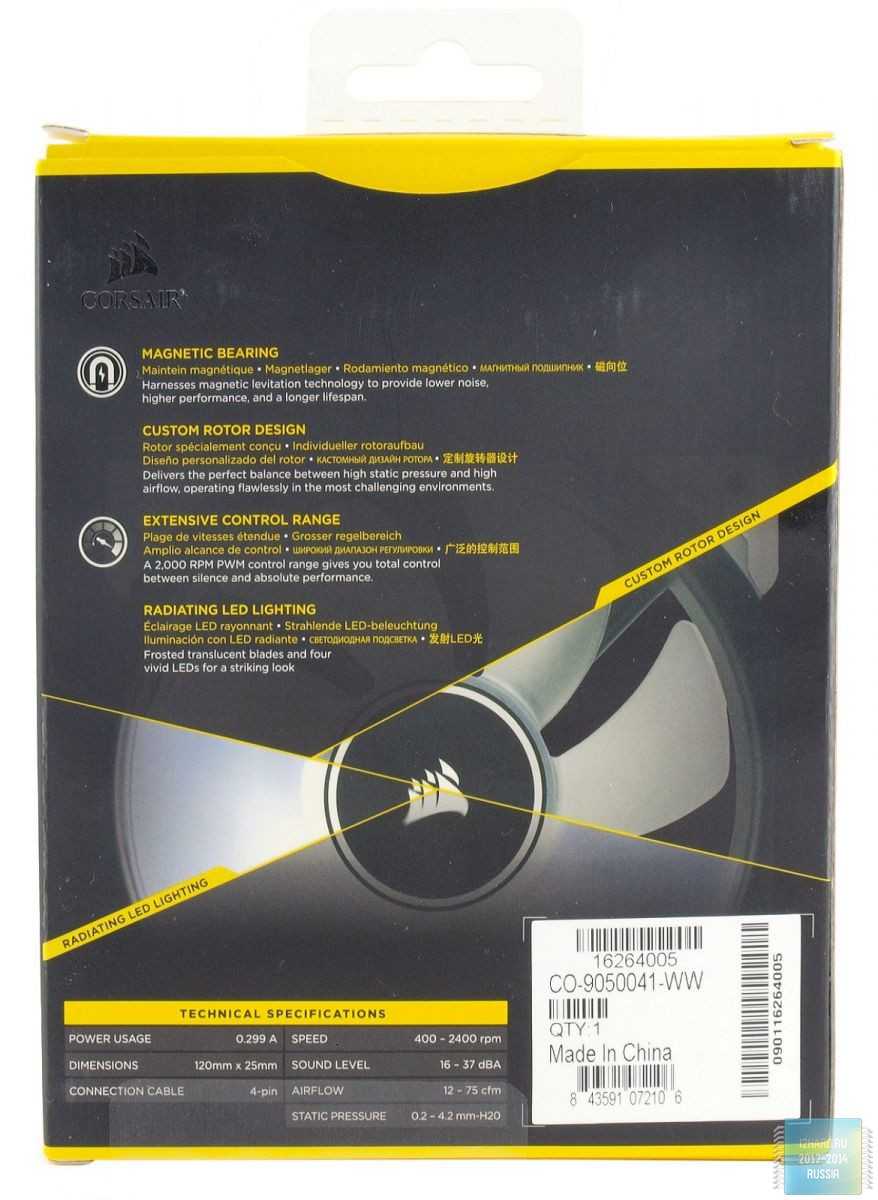
Corsair ML120 Pro LED размещается в специальной нише внутренней коробки и фиксируется боковыми вставками избумаги, защищающем новинку во время транспортировки.
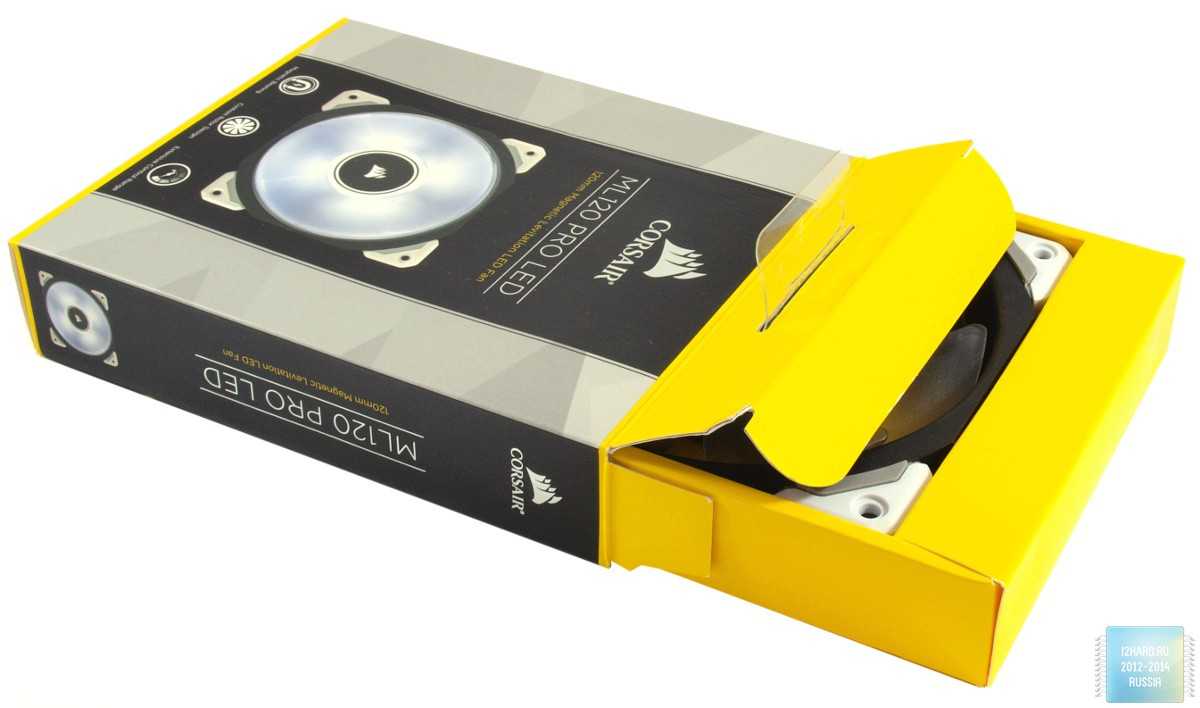
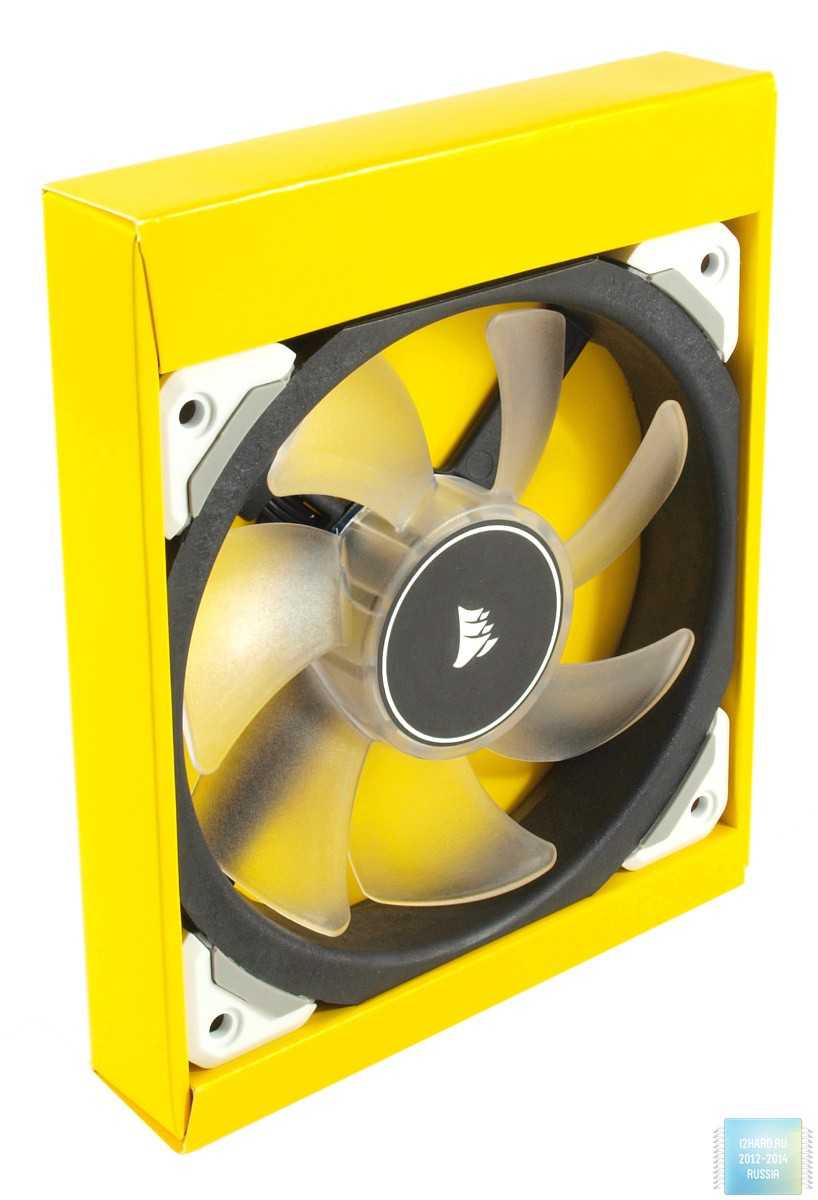
Комплектующие помещены в верхний отсек упаковки. В комплекте с вентилятором поставляются гарантийная брошюра, четыре винта для крепления к стенкам корпуса ПК и две стяжки для укладки проводов.
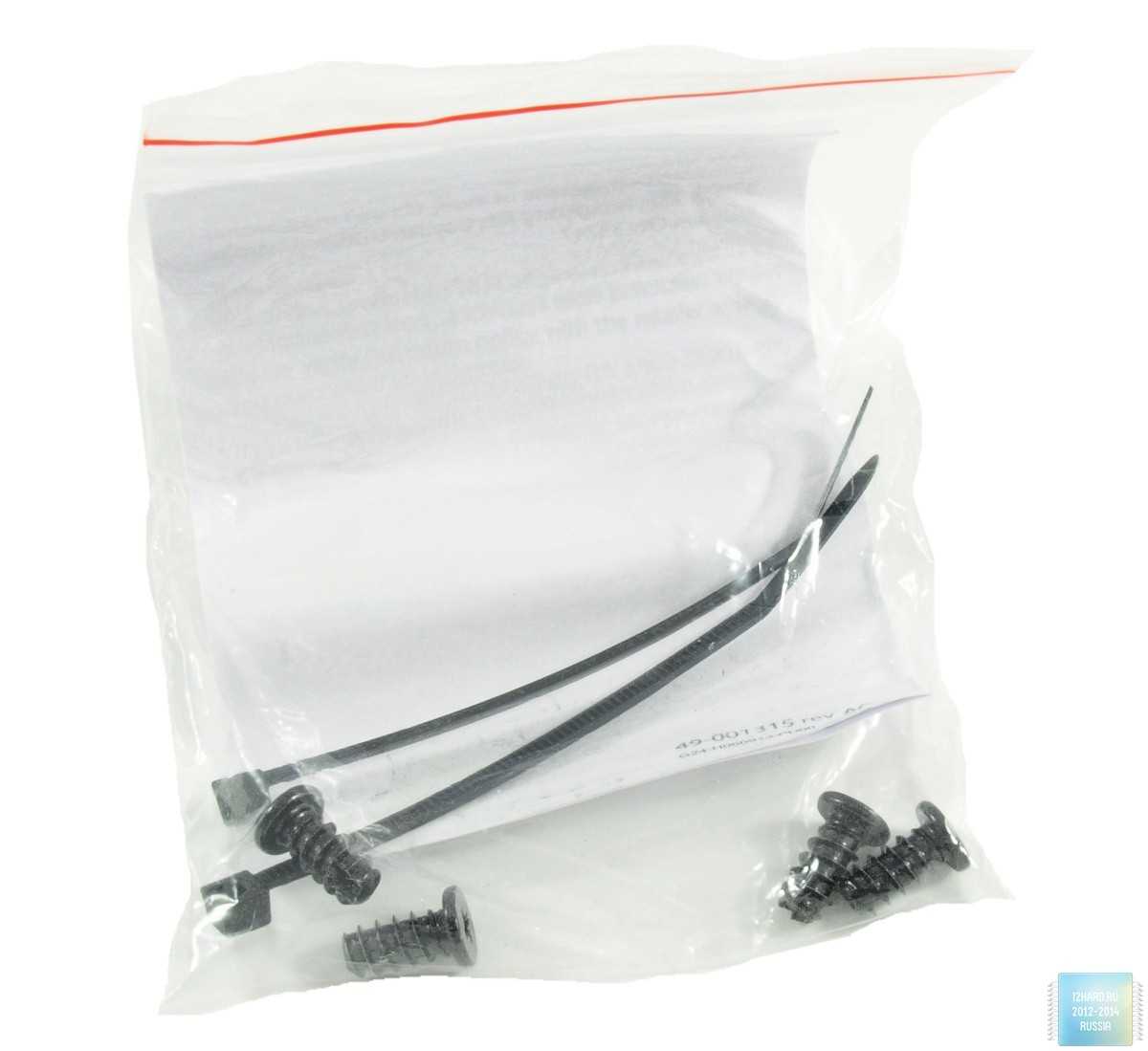
Внешний вид
Модель Corsair ML120 Pro LED построена на базе магнитных подшипников, работающие на принципе магнитной левитации. Разработчики не первыми стали использовать данное инженерное решение, однако, подобных моделей на рынке все равно очень немного. Представленная серия Pro LED снабжена белойсветодиодной подсветкой и для ее более зрелищной демонстрацииданная линейка обзавелась полупрозрачными лопастями.
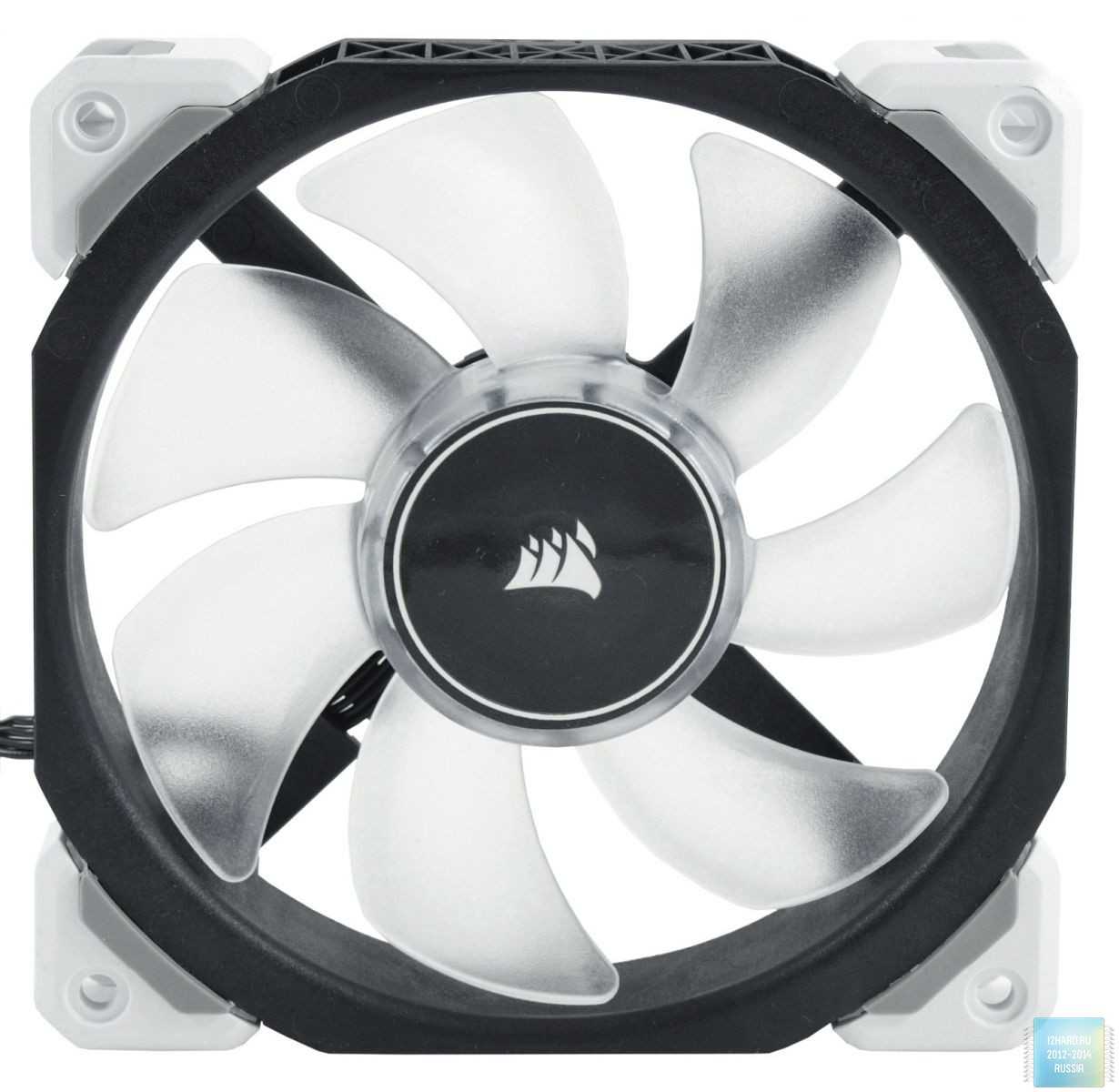
Характеристики модели Corsair ML120 Pro LED довольно хороши. Вентилятор вращается со скоростью 400 – 2400 об/мин, создает воздушный поток 20 – 127 м3/ч (12 – 75 CFM), статическое давление 0,2‒4,2 мм водяного столба, а уровень шума не превышает 37 дБА.
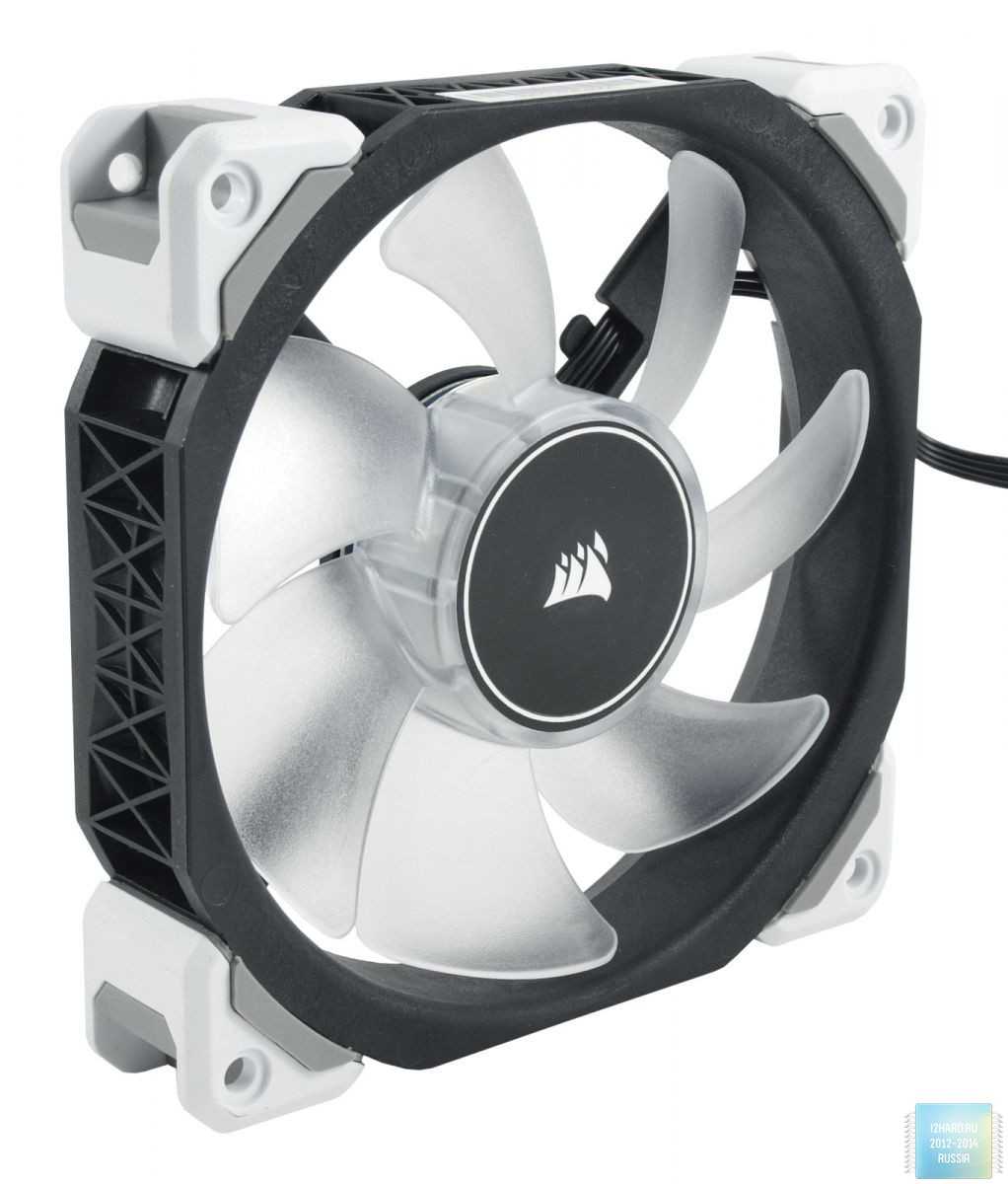
Новинка обладает сменными антивибрационными насадками по углам корпуса вентилятора, придавая ей красивый внешний вид.
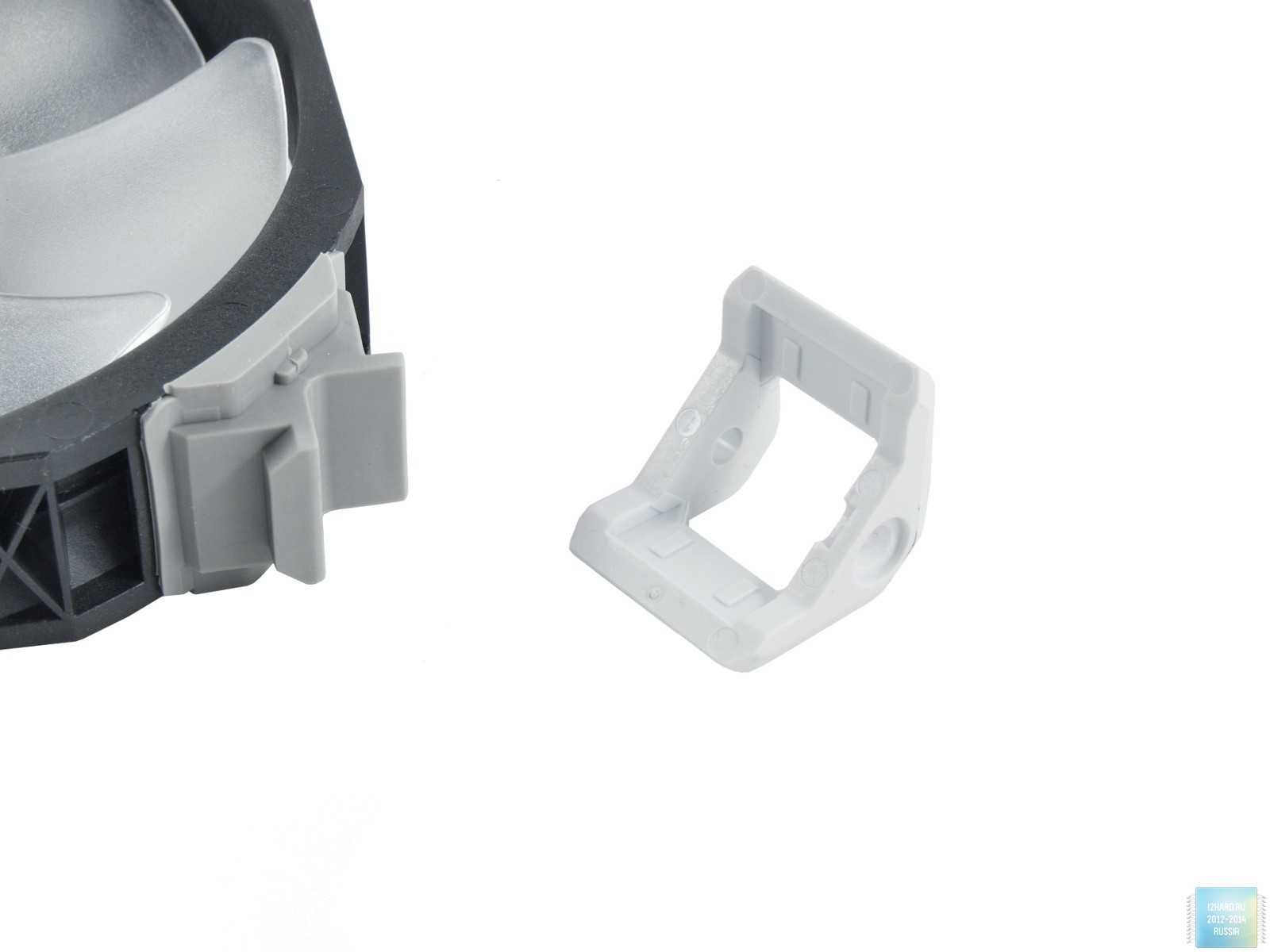
Прозрачная крыльчатка подсвечивается четырьмя светодиодами, встроенными в ротор вентилятора. На противоположной стороне размещена привычная наклейка с характеристиками: напряжение 12 В, потребляемый ток до 0.299 А, потребление электроэнергии составляет до 3.48 Вт.
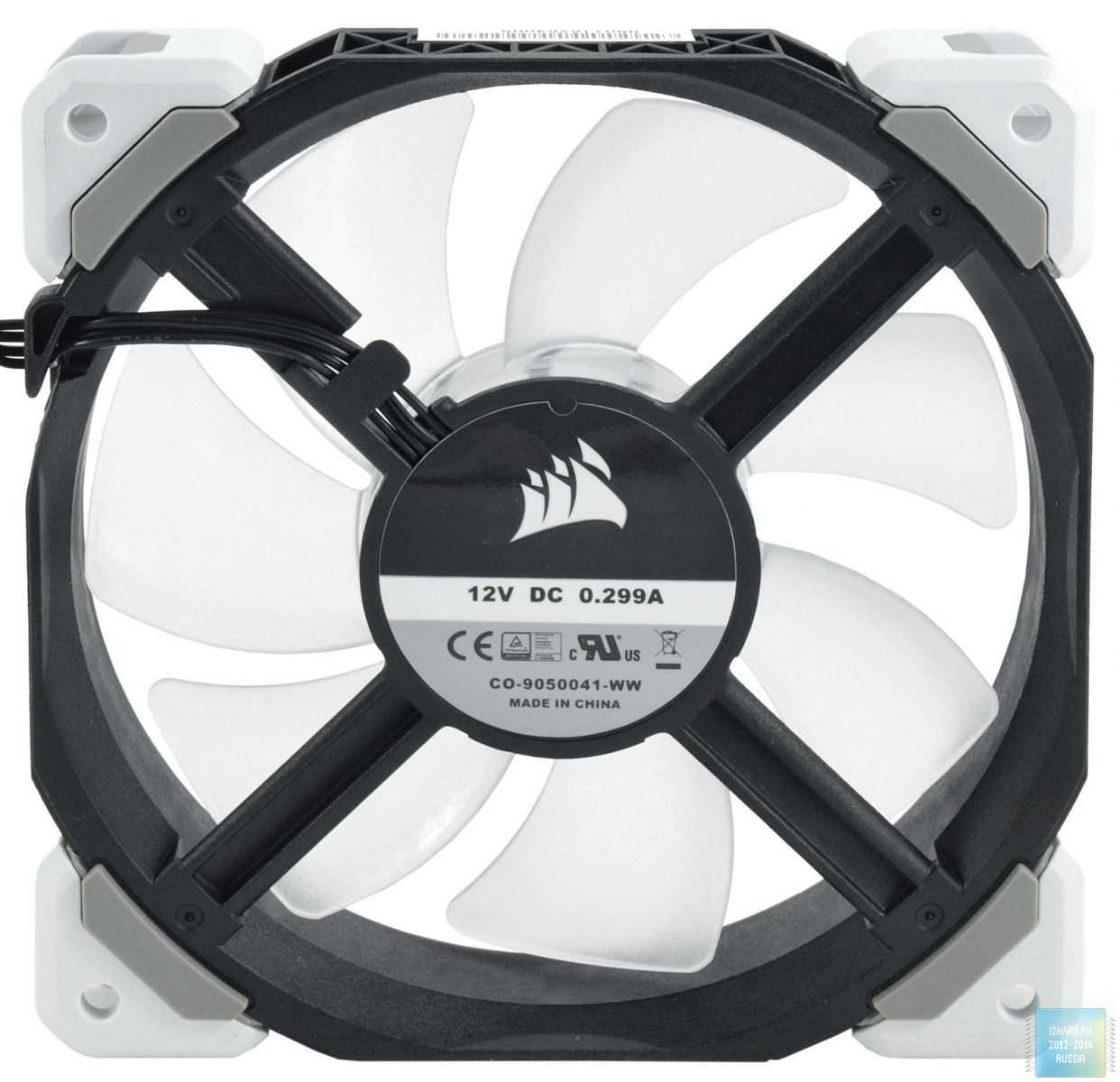
Четырехконтактный разъем питания вентилятора напоминает об наличии ШИМ-регулирования скорости вращения. Длина провода составляет впечатляющие 56 см.
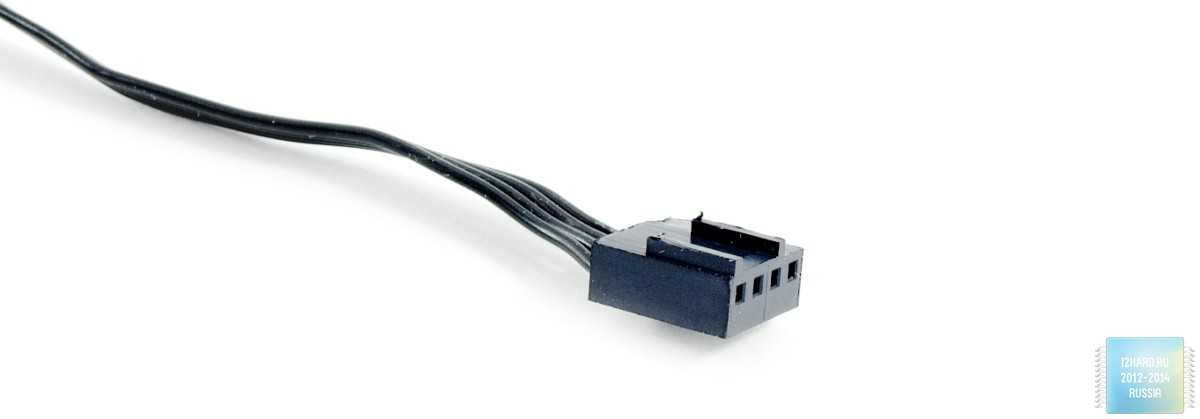
Creator Profile Picks
Spectrum — A Corsair RGB Profile Collection
Spectrum Video
Spectrum Wallpaper Engine Download
Spectrum Background Images Download
Version: iCUE 4.23.137 or Higher
Profiles: ‘Crimson’, ‘Brimstone’, ‘Nuclear’, ‘Corrosive’, ‘Cobalt’,
‘Poison’, ‘Neon’, ‘Titanium’, ‘SpectrumSwitch’, ‘SpectrumOnPress’, ‘BrimstoneLight’, ‘CorrosiveClassic’ and ‘PoisonClassic’
Crimson
Crimson Video
Version: iCUE 4.23.137 or Higher
Profile: ‘Crimson’
Brimstone
Brimstone Video
Version: iCUE 4.23.137 or Higher
Profile: ‘Brimstone’, ‘BrimstoneDark’
Nuclear
Nuclear Video
Version: iCUE 4.23.137 or Higher
Profile: ‘Nuclear’
Corrosive
Corrosive Video
Old Corrosive (Corrosive Classic) Video
Version: iCUE 4.23.137 or Higher
Profile: ‘Corrosive’
Cobalt
Cobalt Video
Version: iCUE 4.23.137 or Higher
Profile: ‘Cobalt’
Poison
Poison Profile Video
Old Poison (Poison Classic) Profile Video
Version: iCUE 4.23.137 or Higher
Profile: ‘Poison’
Neon
Neon Profile Video
Version: iCUE 4.23.137 or Higher
Profile: ‘Neon’
Titanium
Titanium Profile Video
Version: iCUE 4.23.137 or Higher
Profile: ‘Titanium’
Rainbow Fire
Rainbow Fire Video
Version: iCUE 4.23.137 or Higher
Profile: ‘Rainbow Fire’
Use of multiple devices
Each device has two unique IDs, that is, they should be unique.
You must give each device a unique ID.
There are two IDs that must be changed and .
The Serial Number can be set in the constructor of and as shown in the example.
const char mySerialNumber[] PROGMEM = "202B6949A967"; CorsairLightingProtocolHID cHID(&cLP, mySerialNumber);
The Serial Number MAY only consist of HEX characters (0-9 and A-F).
The DeviceID can be set with the function of .
void setup() {
DeviceID deviceId = { 0x9A, 0xDA, 0xA7, 0x8E };
firmware.setDeviceID(deviceId);
...
}
Alternative
The can be changed with the DeviceIDTool.
Upload the DeviceIDTool sketch and then open the Serial monitor with baudrate 115200.
The tool displays the current DeviceID, you can type in a new DeviceID that is saved on the Arduino.
After that, you can upload another sketch.
Заключение
Вентиляторы Corsair ML120 Pro LED и Corsair ML140 Pro LED действительно впечатляют, обладая широким диапазоном скорости вращения, что позволяет их гибко настроить, и обладают высокой производительностью, позволяя их использовать не только как корпусные, но и в системах жидкостного охлаждения.
Из приятных особенностей стоит выделить подшипник с магнитной левитацией, который на низких скоростях делает модели бесшумными, а также повышает их срок службы. Все это подчеркивается уверенностью разработчиков, которые оснащают вертушки пятилетней гарантией.Однако сдерживающим фактором является их высокая стоимость.
Плюсы:
- Высокая производительность;
- Низкий уровень шума;
- Магнитный подшипник;
- Ресурс работы более 200.000 часов;
- 5-летняя гарантия.
Минусы:
Цена.






























